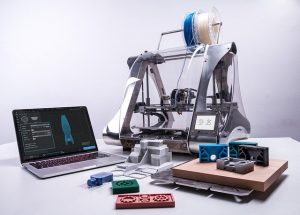
3D printing applications often involve the use of either a raft or brim. Both components serve as a substrate on which the respective object or built. Using a 3D printer, manufacturing companies can build custom-shaped objects layer by later by depositing the material onto a raft or brim. Rafts and brims aren’t the same, however. While they both serve as a base substrate for 3D printing applications, there are some key differences between them that shouldn’t be ignored.
What Is a Raft?
A raft is a flat piece of mesh material that serves as the substrate on which the 3D printed object is built. It typically measures just slightly wider than the initial layer of the object being built. Prior to building an object with a 3D printer, a manufacturing company may lay down a raft. Once placed in the appropriate area, the manufacturing company can begin to build the object by depositing layers of material onto the raft.
What Is a Brim?
Like a raft, a brim is a substrate used for 3D printing. Also like rafts, brims generally consist of a mesh material. Based on their similarities, you may assume they are the same. The difference between them, however, is that rafts go underneath the printed object, whereas brims go around the printed object. A brim can best be described as a flat and horizontal expansion of the printed object’s initial layer. While rafts are placed underneath the printed object, brims are placed around the printed object, essentially creating the appearance of a skirt.
Another difference between rafts and brims lies in their construction. Although there are exceptions, most rafts consisting of multiple layers, whereas most brims consist of a single layer.
Why Rafts Are Better Than Brims
Either rafts or brims can be used in 3D printing applications. Of those two options, though, the former is typically the better choice. Rafts create better adhesion, for example, than brims because they are placed underneath the printed object. It helps the material stick together, thereby improving adhesion.
Of course, the downside to using rafts is that they are more difficult to separate from the printed object than brims. Since they promote adhesion — the object sticks to the raft — more force must be exerted to separate a raft from the printed object. With that said, many manufacturing companies still prefer to use rafts over brings because of their strong adhesion properties.
Learn more about Monroe’s Additive Printing Service or get your parts printed now!
No tags for this post.
